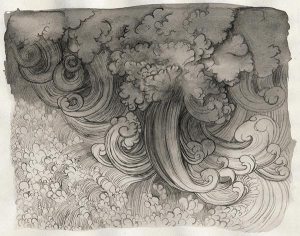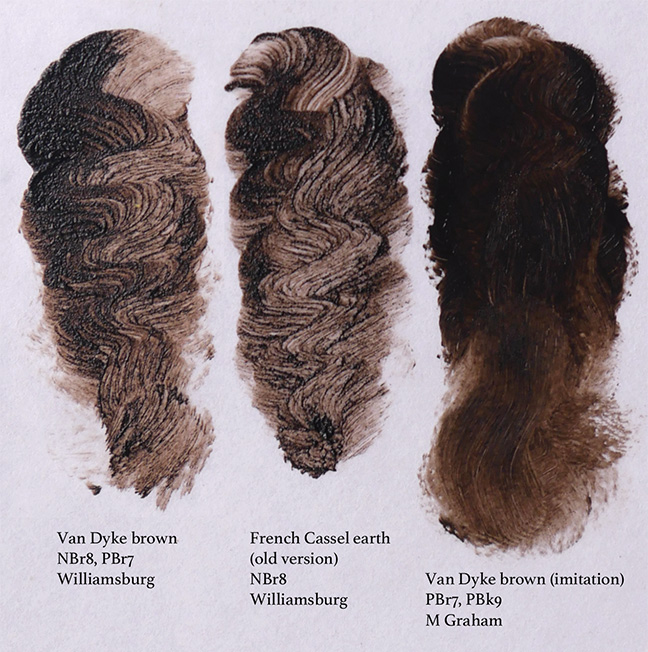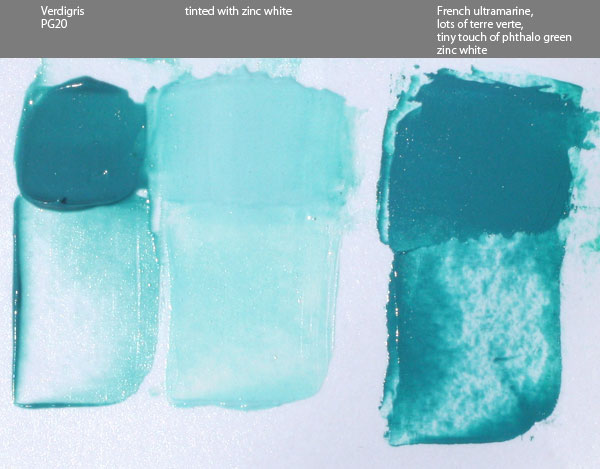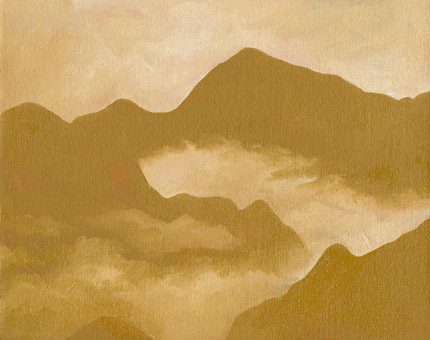
There’s a large variety of both natural and synthetic yellow ochres, and as one least expensive pigments it’s been a way for me to try different brands while also getting a useful paint. The natural version is normally called yellow ochre, and the synthetic version is Mars yellow, but paint makers can label their paints with whatever name they want. This includes using the name yellow ochre for paint made with the synthetic pigment. I’ll just call them all yellow ochre here.
Obviously most of the common yellow ochres, seen in the top half of the chart, are very similar to each other in color, so I would suggest just choosing only one or two at the most. Synthetic ones tend to have higher tinting strength, which is seen by how well the paint retains its color when mixed with white, and are also almost always more opaque. The exception would be the transparent mars yellows at the bottom.
Other aspects of the paint, such as how loose or stiff it is, may be very different even between paints that are similar in color. For example, the Old Holland paints above are the stiffest, while the M Graham and Winsor & Newton paints were much looser. Blockx was smooth and buttery, but not as stiff as Old Holland. The paints I made were loose and had no stabilizers added.
The more exotic ochres at the bottom aren’t seen as often in paint lines but have a greater variety of opacity and hue. A few of them I made myself from dry pigments. In some cases, such as the orange ochre from Rublev, those can also be bought as already made paint. I just don’t have those paints myself and my efforts to make paint shouldn’t be taken as good examples of what the already made paint would be like.
A couple of especially notable paints in this chart are the lemon ochre for its brightness and clarity and the orange ochre for how similar it already is to certain skin tones when just mixed with white. If I were to just choose two, those would be my favorites.
All of these swatches were mixed with Williamsburg titanium white. I tried to mix equal amounts but could have been a little off. The photo was taken in sunlight and white balanced in Photoshop, but may not be perfectly accurate. Some of these tubes were old and may not represent what these brands currently produce.
A similar comparison of red ochre oil paints can be found here.























